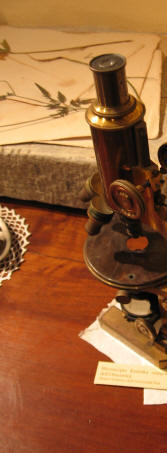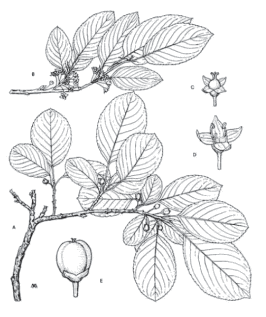|



hightlighted
entities


Descriptive cards
of some important
plants
(in italian)
Aquilegia bertolonii
Biscutella apuana
Campanula medium
Carex macrolepis
Carex macrostachys
Carum appuanum
Centaurea arachnoidea
Centaurea arrigoni
Cerastium apuanum
Globularia incanescens
Hypericum coris
Lomelosia graminifolia
Moltkia suffruticosa
Orchis pauciflora
Phyteuma scorzonerifolia
Polygala carueliana
Rhamnus glaucophylla
Rhinanthus apuanus
Salix crataegifolia
Santolina leucantha
Saxifraga lingulata
Scabiosa holosericea
Sesleria tenuifolia
Valeriana saxatilis
Veronica aphylla
The Park's Herbarium

|

Centaurea montis-borlae
Soldano
The particular richness and diversity of the flora of the Apuan Alps are
due to various factors such as geographical features, climate
variability and the complex geological nature of the area that shows the
alternation of limestone areas, generally arid, with little basic soil,
and siliceous, waterproof, acid soil with the highest water content.
On the main slopes, exposed to the sea,
the vegetation is Mediterranean: where the soil is calcareous, up to
about 300 m above sea level is the Mediterranean sclerophyllous
evergreen, composed by the holm oak (Quercus ilex L.) myrtle (Myrtus
communis L.), terebinth (Pistacia terebinthus L.) and fillirea (phillirea
latifolia L.); this vegetation has been replaced in large areas with
olive groves; where the soil is acidic, up to about 600 m above sea
level, we can see the pine forest of maritime pine (Pinus pinaster Aiton).
Proceeding inward, with increasing
altitude, you will encounter the oak-hornbeam and hornbeam-Cerreto,
largely replaced by the man with vast chestnut; the oak-hornbeam are
common in all limestone soils of the sunny Tyrrhenian side of the Apuan
Alps from an altitude of 400 meters up to 1400 meters. The tree that
dominates this kind of vegetation is the hornbeam (Ostrya carpinifolia
Scop.), accompanied by the downy oak (Quercus pubescens Willd.) and the
"orniello" (Fraxinus ornus L.).
In areas of oak-hornbeam, on rocks and in
the debris, some endemic species of the Apuan Alps are frequent: the
globularia (Globularia incanescens Viv.), Santolina (Santolina leucantha
Bertol.), the asteroid supple salicin (Buphthalmum salicifolium L .
subsp. flexile (Bertolt). Garbari), the molchia (Moltkia suffruticosa
(L.) Brand), the Apuan chickweed (Cerastium apuanum Parl.), the Apuan
willow (Salix crataegifolia Bertol.) and others.
The Cerreto-hornbeam is frequent mostly in fresh soils, especially in
the valleys of Lunigiana and Garfagnana. It 's always present the
"cerro" oak (Quercus cerris L.) together with hornbeam (Ostrya
carpinifolia Scop.), The white hornbeam (Carpinus betulus L.), and the
hazel (Corylus avellana L.).
Most of the deciduous forests in the past has been transformed into a
chestnut coppice or fruit: the man has planted or encouraged the
chestnut (Castanea sativa Miller) in all soils slightly acid suitable
for the plant in order to extract chestnuts and wood; In fact, it is
widely known the importance of the chestnut has played, especially in
the past, in the life and economy of the apuan populations.
At higher altitudes we can found the "faggete", dominated by beech (Fagus
sylvatica L.), with greater extension in the northern slopes of the
Apuan Alps in Garfagnana and Lunigiana, from an altitude of 800-900 m up
to 1600-1700 m. In the Tyrrhenian coast, especially where the geological
substrate is made from marble, the beech woods have a lower extension,
and are mostly comprised between 1200-1400 m a.s.l.
The vegetation of the altitude areas presents different aspects; on the
higher parts of the siliceous peaks live the moors. They are found
mostly in the central and northern Apuan and are mainly composed of two
different species of blueberry (Vaccinium myrtillus L. gaultherioides
and V. Bigelow).
The arid limestone peaks, seemingly devoid of vegetation, host several
herbaceous species that actually live on the rocky walls; this is mostly
not graminoids herbs, bushes and shrubs, which create a kind of
discontinuous vegetation, called "vegetation casmofila"; this sparse
vegetation largely characterizes the apuan vegetal landscape and
develops over the marble peaks (part of the Monte Contrary, Monte
Tambura, Monte Sella, part of Sumbra Monte, Monte Altissimo, Monte
Corchia), grezzone peaks (Pizzo d'Uccello, Cresta Garnerone, Monte
Grondilice Range of hooks, "Towers" of Mount Corchia), limestone and
flint (Monte Sagro, part of the Monte Contrary, Zucchi Cardeto, part of
the Monte Sumbra). In these environmental conditions numerous endemic
species appear, such as the atamanta (Athamanta Cortiana Ferrarini) and
the fluffy silene (Silene lanuginosa Bertol.).
 Qui di lato sono
disponibili le schede botaniche di alcune specie
vegetali di interesse presenti nel comprensorio
apuano Qui di lato sono
disponibili le schede botaniche di alcune specie
vegetali di interesse presenti nel comprensorio
apuano
testi:
Maria Ansaldi, Emanuele Guazzi
iconografia: Anne Maury
|